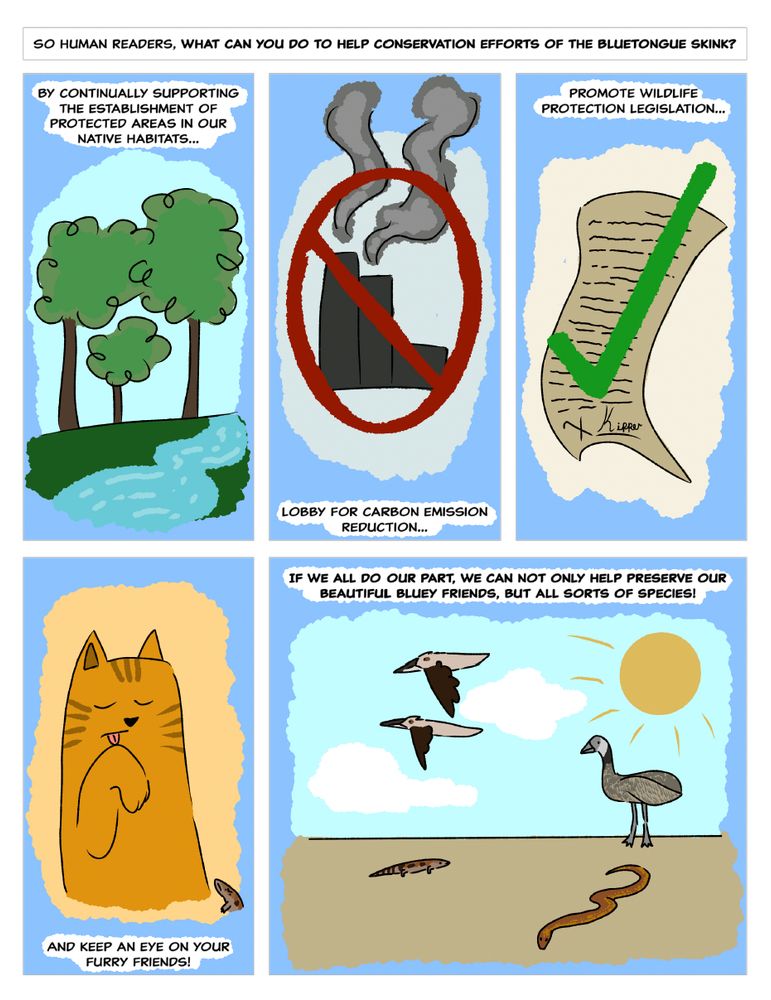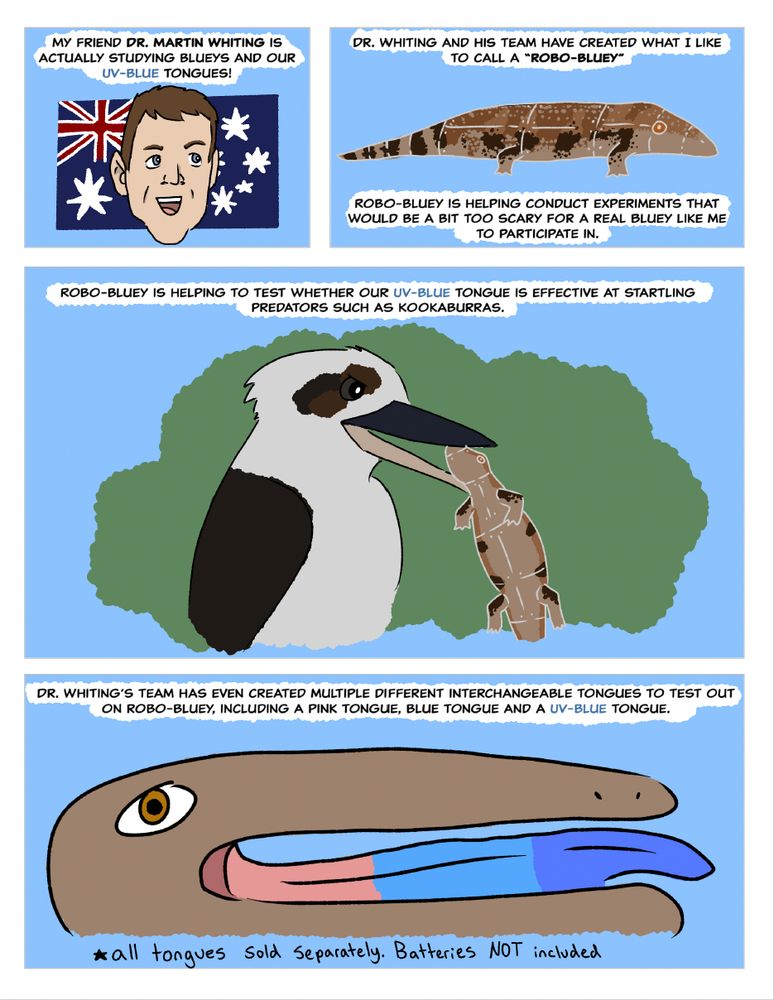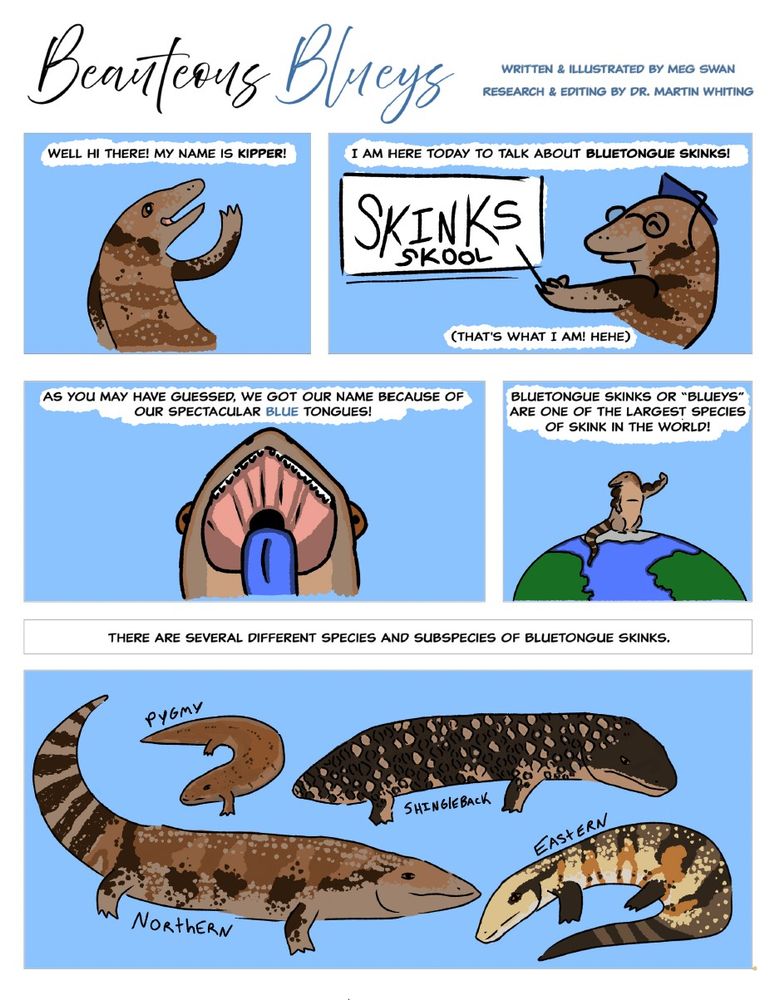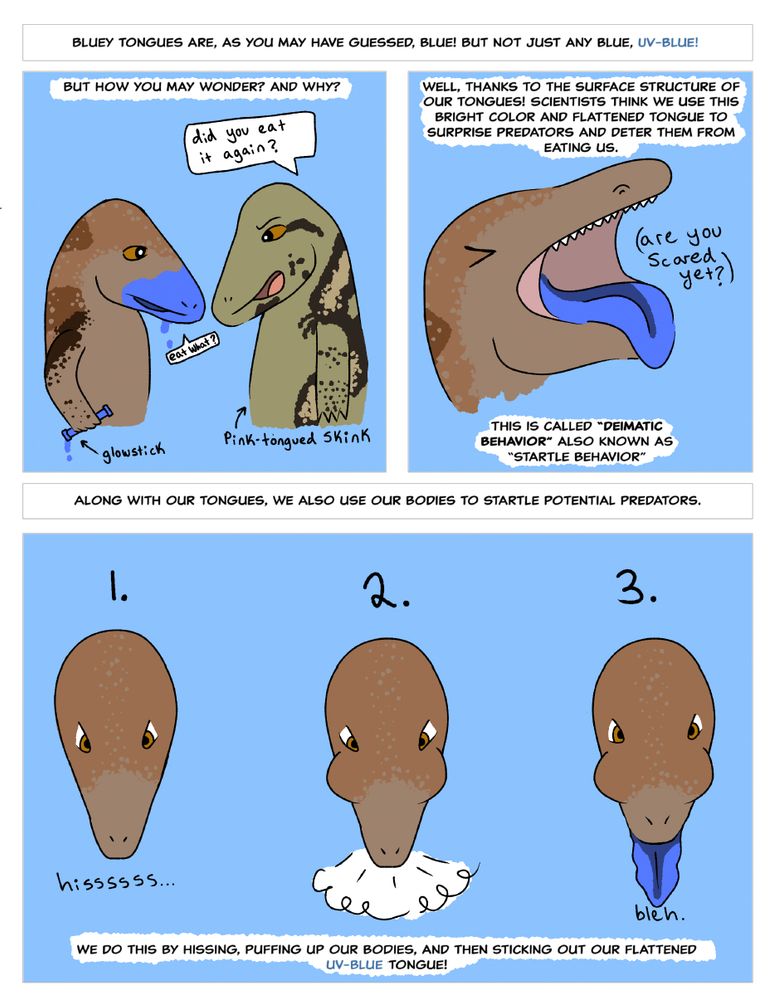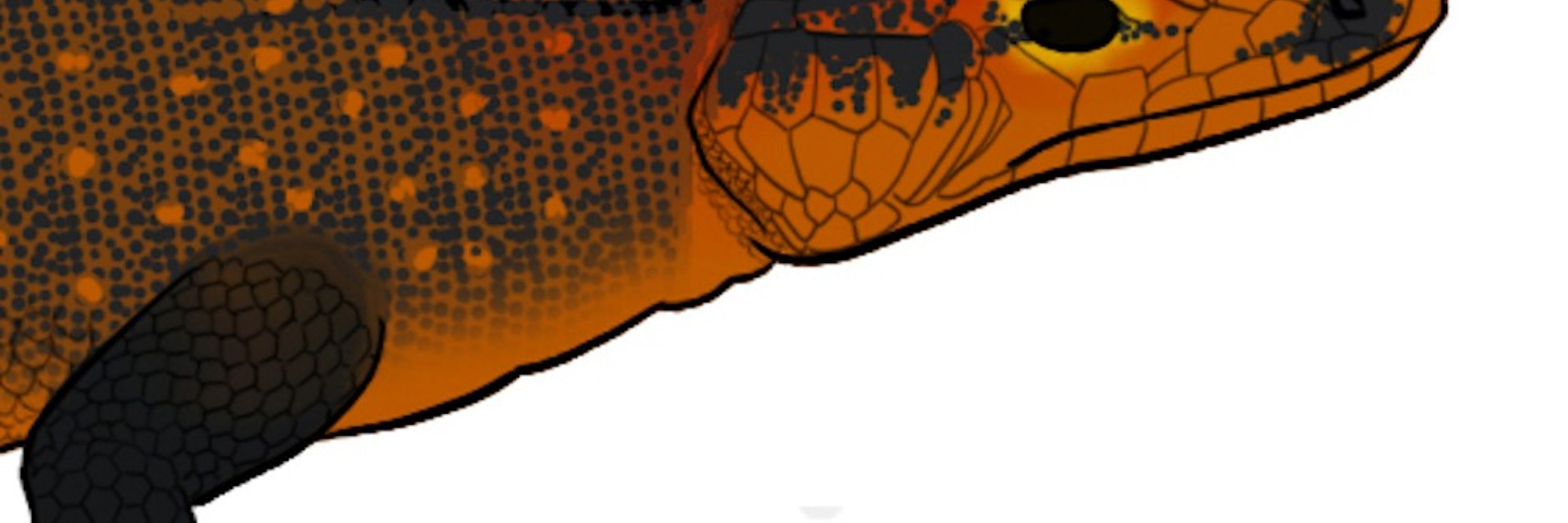
Martin Whiting
@lizardlab.bsky.social
Professor of Animal Behaviour. Posts mostly about The Lizard Lab - research group investigating behaviour, ecology, evolution of lizards (mostly). https://whitinglab.com/ for research, members, photos, blog. All other links: https://linktr.ee/lizard_lab
Check out this NY Times piece on a recent study led by @jameststroud.bsky.social and @jblosos.bsky.social on lizards surviving limb loss. The paper offers a fresh perspective on natural selection and was published in The American Naturalist: www.journals.uchicago.edu/doi/full/10....
University of Chicago Press Journals: Cookie absent
www.journals.uchicago.edu
October 21, 2025 at 12:51 PM
Check out this NY Times piece on a recent study led by @jameststroud.bsky.social and @jblosos.bsky.social on lizards surviving limb loss. The paper offers a fresh perspective on natural selection and was published in The American Naturalist: www.journals.uchicago.edu/doi/full/10....
Reposted by Martin Whiting
Members of the U.K. and international scientific community are invited to sign to show their support: docs.google.com/forms/d/e/1F...
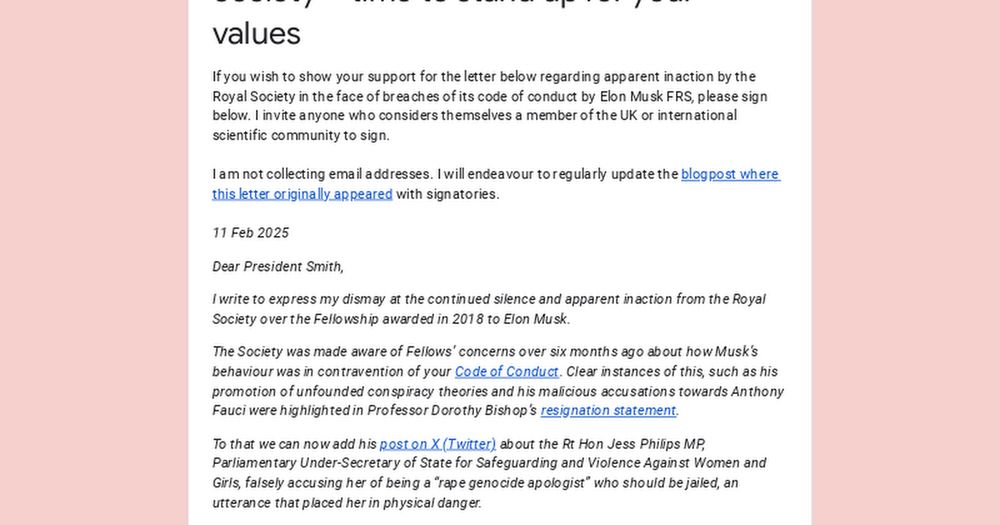
Open letter to the President of the Royal Society – time to stand up for your values
If you wish to show your support for the letter below regarding apparent inaction by the Royal Society in the face of breaches of its code of conduct by Elon Musk FRS, please sign below. I invite anyo...
docs.google.com
February 11, 2025 at 5:17 PM
Members of the U.K. and international scientific community are invited to sign to show their support: docs.google.com/forms/d/e/1F...
To read our first paper about bluey tongue colour, go here: link.springer.com/article/10.1... or message us for a PDF.
#lizard #bluetongue #bluetongueskink #bluetonguelizard #lizardcartoon #cartoon #tiliqua #coloursci
#lizard #bluetongue #bluetongueskink #bluetonguelizard #lizardcartoon #cartoon #tiliqua #coloursci
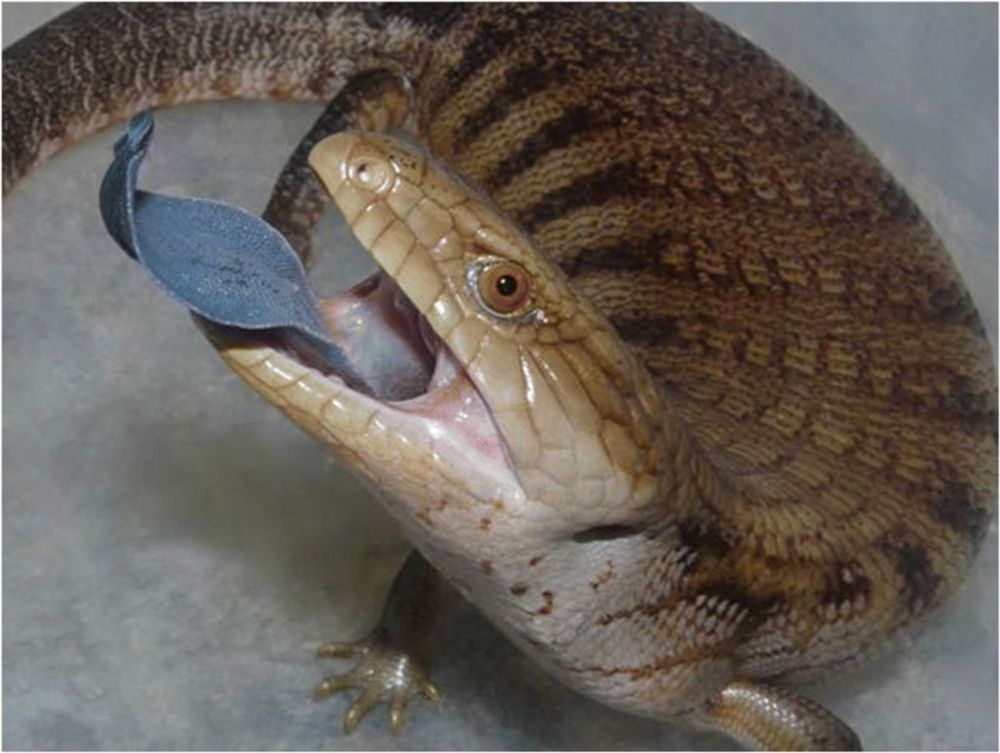
Why blue tongue? A potential UV-based deimatic display in a lizard - Behavioral Ecology and Sociobiology
Abstract Deimatic displays are a type of anti-predator behaviour that startles the predator. They have received much recent theoretical attention, enabling the empirical study of this phenomenon withi...
link.springer.com
January 9, 2025 at 12:39 AM
To read our first paper about bluey tongue colour, go here: link.springer.com/article/10.1... or message us for a PDF.
#lizard #bluetongue #bluetongueskink #bluetonguelizard #lizardcartoon #cartoon #tiliqua #coloursci
#lizard #bluetongue #bluetongueskink #bluetonguelizard #lizardcartoon #cartoon #tiliqua #coloursci
To answer that question we are delving into collaborative projects with nanoparticle engineers and experts in robotics. This phase of the study is being led by Dr. Sergio Naretto. Stay tuned for more exciting results!
January 9, 2025 at 12:39 AM
To answer that question we are delving into collaborative projects with nanoparticle engineers and experts in robotics. This phase of the study is being led by Dr. Sergio Naretto. Stay tuned for more exciting results!
They are perhaps best know for their bright blue tongues but read the cartoon — the blue colour we see is not all it appears to be.
The Lizard Lab tackled the question of why the tongue is so brightly coloured, and how that colour is produced.
The Lizard Lab tackled the question of why the tongue is so brightly coloured, and how that colour is produced.
January 9, 2025 at 12:39 AM
They are perhaps best know for their bright blue tongues but read the cartoon — the blue colour we see is not all it appears to be.
The Lizard Lab tackled the question of why the tongue is so brightly coloured, and how that colour is produced.
The Lizard Lab tackled the question of why the tongue is so brightly coloured, and how that colour is produced.
Part 2
This work was edited and supported by @hudrewthis.bsky.social, an academic in MassArt's new Integrative Sciences and Biological Arts Department.
Blueys are iconic in Australia. They are a particularly large skink, found in both the wild and suburbia, where they face lots of threats.
This work was edited and supported by @hudrewthis.bsky.social, an academic in MassArt's new Integrative Sciences and Biological Arts Department.
Blueys are iconic in Australia. They are a particularly large skink, found in both the wild and suburbia, where they face lots of threats.
January 9, 2025 at 12:39 AM
Part 2
This work was edited and supported by @hudrewthis.bsky.social, an academic in MassArt's new Integrative Sciences and Biological Arts Department.
Blueys are iconic in Australia. They are a particularly large skink, found in both the wild and suburbia, where they face lots of threats.
This work was edited and supported by @hudrewthis.bsky.social, an academic in MassArt's new Integrative Sciences and Biological Arts Department.
Blueys are iconic in Australia. They are a particularly large skink, found in both the wild and suburbia, where they face lots of threats.


